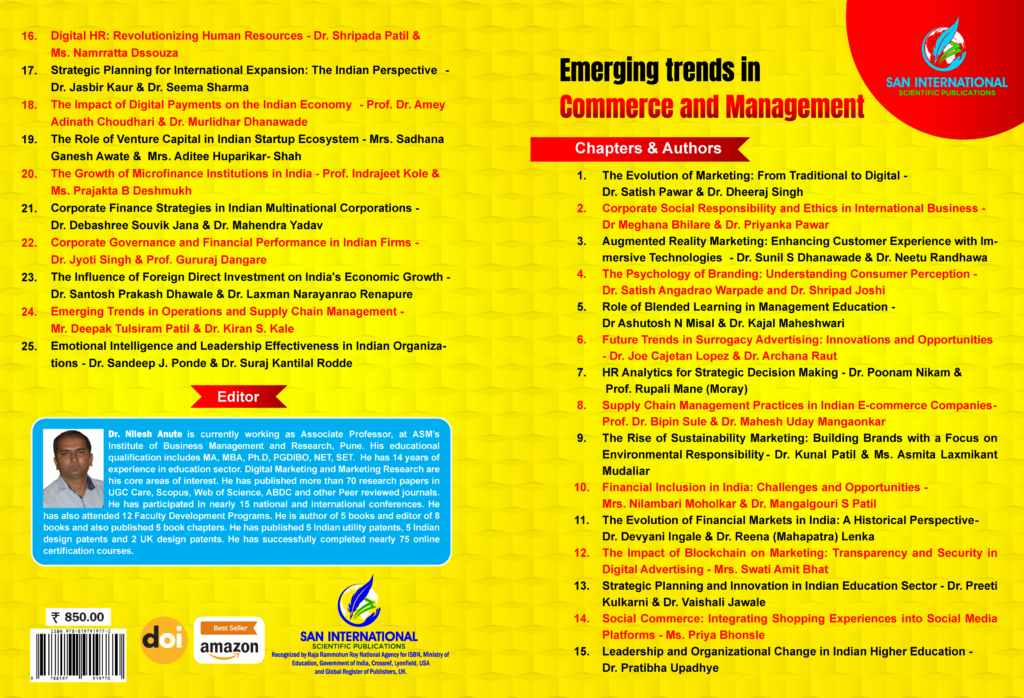Book Title: Emerging Trends in Commerce and Management
Editor: Dr. Nilesh Anute
ISBN: 978-81-979197-7-0
Chapter: 17
DOI: https://doi.org/10.59646/emc17/255
Authors:
Dr. Jasbir Kaur, Director – GNIMS B School, Head – IT & HR, SGPC’s Guru Nanak Institute of Management Studies, Mumbai, Maharashtra, India.
Dr. Seema Sharma, Professor, Faculty of Commerce and Management, Assam down town University, Guwahati, Assam. India.
Learning Objectives
Effective strategic planning is crucial for Indian organisations aiming to leverage global market possibilities and achieve long-term growth through foreign expansion. The objective of this chapter is to offer a thorough comprehension of the process and its advantages, with a specific focus on the Indian viewpoint. Firstly, it emphasises the importance and benefits of expanding internationally, such as diversifying the market, reaching new client segments, and achieving economies of scale. These factors boost the visibility of the brand and its competitiveness on a worldwide scale. The chapter explores the essential elements and frameworks of strategic planning, such as market analysis, entry tactics, risk assessment, and resource allocation. It utilises tools such as PESTEL, SWOT, and Porter’s Five Forces. Moreover, it recognises the potential advantages for Indian companies, such as accessing growing markets and utilising diaspora connections, while also acknowledging the substantial obstacles, such as adhering to regulations, managing cultural disparities, and dealing with operational intricacies. Moreover, this analysis assesses the impact of government policies, market circumstances, and competitive dynamics, specifically focusing on how measures such as the Foreign Trade Policy and bilateral trade agreements either support or impede international expansion. The chapter also explores optimal strategies for expanding internationally, including cultivating a global perspective, nurturing cross-cultural proficiency, and harnessing technological advancements.
References
- Ghewari A, Anute N (2021) Social Media Marketing Strategies Of E Learning Organizations With Special Reference To Elementary Education, Ilkogretim Online – Elementary Education Online, 2021; Vol 20, Issue 6, Page no. 3593-3600.
- Luo, Y. (2005). Transactional characteristics, institutional environment and joint venture contracts. Journal of International Business Studies, 36(2), 209–230.
- Luo, Y., Shenkar, O., & Gurnani, H. (2008). Control–cooperation interfaces in global strategic alliances: A situational typology and strategic responses. Journal of International Business Studies, 39(3), 428–453.
- MacDuffie, J. P. (2011). Inter-organizational trust and the dynamics of distrust. Journal of International Business Studies, 42(1), 35–47.
- Pollitte, W. A., Miller, J. C., & Yaprak, A. (2015). Returns to US firms from strategic alliances in China: A knowledge-based view. Journal of World Business, 50(1), 144–148.

